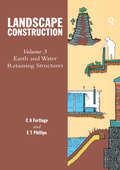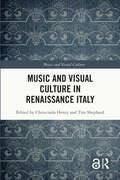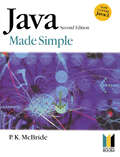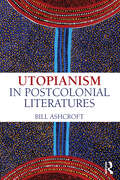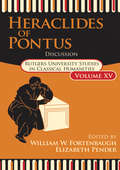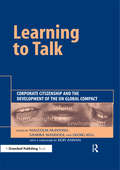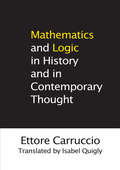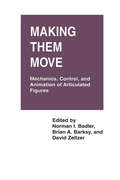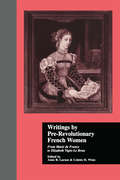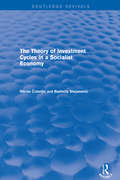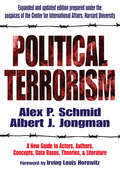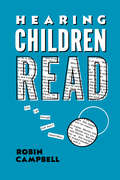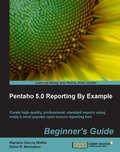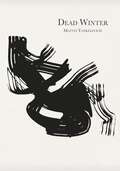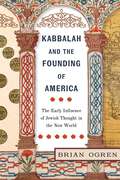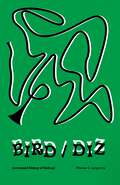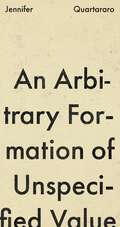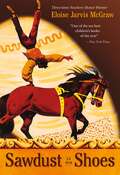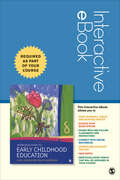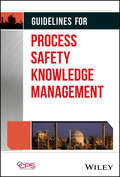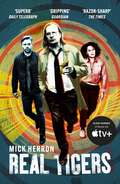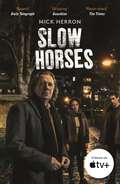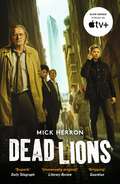- Table View
- List View
Landscape Construction: Volume 3: Earth and Water Retaining Structures
by E.T. PhillipsLandscape Construction Volume 1 deals with elements of landscape construction which are required to provide enclosure, privacy, demarcation of land, shelter and security. The elements discussed include free-standing brick and stone walls, fences, gates and railings. Fittings and finishes are also covered. Each section describes the materials, construction and constraints relevant to the subject and a large number of detailed figures and photographs supplement the text and help to illustrate the more important aspects. There is also a section on preservation treatment and painting. The current British Standard references are included.
Music and Visual Culture in Renaissance Italy (Music and Visual Culture)
by Tim Shephard Chriscinda HenryThe chapters in this volume explore the relationship between music and art in Italy across the long sixteenth century, considering an era when music-making was both a subject of Italian painting and a central metaphor in treatises on the arts. Beginning in the fifteenth century, transformations emerge in the depiction of music within visual arts, the conceptualization of music in ethics and poetics, and in the practice of musical harmony. This book brings together contributors from across musicology and art history to consider the trajectories of these changes and the connections between them, both in theory and in the practices of everyday life.In sixteen chapters, the contributors blend iconographic analysis with a wider range of approaches, investigate the discourse surrounding the arts, and draw on both social art history and the material turn in Renaissance studies. They address not only paintings and sculpture, but also a wide range of visual media and domestic objects, from instruments to tableware, to reveal a rich, varied, and sometimes tumultuous exchange among musical and visual arts and ideas. Enriching our understanding of the subtle intersections between visual, material, and musical arts across the long Renaissance, this book offers new insights for scholars of music, art, and cultural history.Chapter 15 of this book is freely available as a downloadable Open Access PDF at http://www.taylorfrancis.com under a Creative Commons Attribution-Non Commercial-No Derivatives (CC-BY-NC-ND) 4.0 license.
Java Made Simple
by P K McbrideJava is a programming language designed for use on networks, in particular the Internet, and can also be used to write full-scale applications. It is based upon C++ and is very similar in its style and structure. Java Made Simple 2nd edition concentrates on getting the reader started and assumes no prior programming knowledge. Once the essentials have been mastered, it provides the confidence to go deeper into the language and broaden and develop invaluable programming skills.
Utopianism in Postcolonial Literatures
by Bill AshcroftPostcolonial Studies is more often found looking back at the past, but in this brand new book, Bill Ashcroft looks to the future and the irrepressible demands of utopia. The concept of utopia – whether playful satire or a serious proposal for an ideal community – is examined in relation to the postcolonial and the communities with which it engages. Studying a very broad range of literature, poetry and art, with chapters focussing on specific regions – Africa, India, Chicano, Caribbean and Pacific – this book is written in a clear and engaging prose which make it accessible to undergraduates as well as academics. This important book speaks to the past and future of postcolonial scholarship.
Heraclides of Pontus: Discussion (Rutgers University Studies in Classical Humanities)
by William W. Fortenbaugh Elizabeth PenderHeraclides of Pontus hailed from the shores of the Black Sea. He studied with Aristotle in Plato's Academy, and became a respected member of that school. During Plato's third trip to Sicily, Heraclides served as head of the Academy and was almost elected its head on the death of Speusippus.Heraclides' interests were diverse. He wrote on the movements of the planets and the basic matter of the universe. He adopted a materialistic theory of soul, which he considered immortal and subject to reincarnation. He discussed pleasure, and like Aristotle, he commented on the Homeric poems. In addition, he concerned himself with religion, music and medical issues. None of Heraclides' works have survived intact, but in antiquity his dialogues were much admired and often pillaged for sententiae and the like.The contributions presented here comment on Heraclides' life and thought. They include La Tradizione Papirologica di Eraclide Pontico by Tiziano Dorandi, Heraclides' Intellectual Context by Jorgen Mejer, and Heraclides of Pontus and the Philosophical Dialogue by Matthew Fox. There is also discussion of Heraclides' understanding of pleasure and of the human soul: Heraclides on Pleasure by Eckart Schutrumpf and Heraclides on the Soul and Its Ancient Readers by Inna Kupreeva. In addition, there are essays that address Heraclides' physics and astronomical theories: Unjointed Masses: A Note on Heraclides Physical Theory by Robert W. Sharples; Heliocentrism in or out of Heraclides by Paul T. Keyser, The Reception of Heraclides' Theory of the Rotation of the Earth from Posidonius to Simplicius: Texts, Contexts and Continuities by Robert B. Todd and Alan C. Bowen, and Heraclides of Pontus on the Motions of Venus and Mercury by Alan C. Bowen and Robert B. Todd. Finally, there are essays that view Heraclides from the stand point of ancient medicine, literary criticism and musical theory: Heraclides on Diseases and on the Woman Who Did Not Breathe by
Learning To Talk: Corporate Citizenship and the Development of the UN Global Compact
by Sandra Waddock Georg Kell Malcolm McintoshThe UN Global Compact complements other corporate citizenship initiatives by promoting dialogue on the relationship between business and society. At the same time it is the only truly global corporate citizenship initiative. It is not an auditable standard; indeed, it is not a standard or a code in the way that these are normally viewed. It is a set of principles through which business and the United Nations can work in partnership for global social development. For some businesses it is a simplified codification of their existing policies and management practices, but for many engagement represents a challenge and an opportunity to raise their game by aligning profitability with the common good. As the only genuinely global corporate citizenship initiative, the Global Compact draws its moral authority from the UN Secretary-General and its moral and political legitimacy from the UN as the only global political body. It can be viewed as a series of nested networks involving the Secretary-General's Office, the ILO, UNEP, UNHCHR, UNDP and UNIDO, business, NGOs and labour. It can variously be described as an international learning network, as a social network of people and organizations engaged in a global conversation, as a global public policy network, and as a multi-stakeholder dialogue. It is all of these things, but more than anything its greatest success has been in providing a convening platform for a growing global conversation about social development among a variety of actors. However the Global Compact is viewed, it is time to reflect on the first tentative steps of an initiative born in the aftermath of the Cold War, in the "triumph of global economic liberalism" and mass demonstrations against "globalisation". In its first few years, the world has experienced 9/11 and the Iraq War, not forgetting the forty or so civil wars that are ongoing at this time. Whatever is written about the UN Global Compact or its success will be tentative. But there can be some serious reflection on its aims and origins; some telling of stories of engagement; and discussion on how this initiative has quickly become an important reference point in the dialogue on global and corporate governance.
Mathematics and Logic in History and in Contemporary Thought
by Isabel Quigly Ettore CarruccioThis book is not a conventional history of mathematics as such, a museum of documents and scientific curiosities. Instead, it identifies this vital science with the thought of those who constructed it and in its relation to the changing cultural context in which it evolved. Particular emphasis is placed on the philosophic and logical systems, from Aristotle onward, that provide the basis for the fusion of mathematics and logic in contemporary thought.
Making Them Move: Mechanics, Control & Animation of Articulated Figures
by David Zeltzer Norman Badler Brian BarskyCurrent computer graphics hardware and software make it possible to synthesize near photo-realistic images, but the simulation of natural-looking motion of articulated figures remains a difficultand challenging task. Skillfully rendered animation of humans, animals, and robots can delight and move us, but simulating their realistic motion holds great promise for many other applications as well, including ergonomic engineering design, clinical diagnosis of pathological movements, rehabilitation therapy, and biomechanics.Making Them Move presents the work of leading researchers in computer graphics, psychology, robotics and mechanical engineering who were invited to attend the Workshop on the Mechanics, Control and Animation of ArticulatedFigures held at the MIT Media Lab in April 1989. The book explores biological and robotic motor control, as well as state-of-the-art computergraphics techniques for simulating human and animal figures in a natural and physically realistic manner.
Writings by Pre-Revolutionary French Women: From Marie de France to Elizabeth Vige-Le Brun (Women Writers of the World)
by Colette H. Winn Anne R. LarsenThe present volume covers 30 Pre-Revolutionary French women, providing a representative sampling of their manifold and varied contributions to intellectual and cultural history. This volume is unique in its grouping of essentially French writers from the Pre-Revolutionary period. The authors included here range from those prominent because of their social position or literary fame, to those slowly becoming part of a new canon of Old Regime women writers - authors whose works were known to their contemporaries but who have slipped into near invisibility in the following centuries until their recent rediscovery and reassessment.
The Theory of Investment Cycles in a Socialist Economy
by Radmila Stojanovic Nikola CobeljicThis title was first published in 1968. Economic development and the system of the functioning of socialist economies have become the subject matter of an increasing number of works by economists throughout the world. Indeed, the experiences of socialist countries on different levels of social and economic development already offer a good deal of empirical material for theoretical analysis. An attempt at such an analysis has been made in this book, where the authors have concentrated on the investigation of a specific phenomenon in the motion of the economy — so-called investment cycles.
Political Terrorism: A New Guide to Actors, Authors, Concepts, Data Bases, Theories, and Literature
by A.J. JongmanWhile there is no easy way to define terrorism, it may generally be viewed as a method of violence in which civilians are targeted with the objective of forcing a perceived enemy into submission by creating fear, demoralization, and political friction in the population under attack. At one time a marginal field of study in the social sciences, terrorism is now very much in center stage. The 1970s terrorist attacks by the PLO, the Provisional Irish Republican Army, the Popular Front for the Liberation of Palestine, the Japanese Red Army, the Unabomber, Aum Shinrikyo, Timothy McVeigh, the World Trade Center attacks, the assault on a school in Russia, and suicide bombers have all made the term terrorism an all-too-common part of our vocabulary.This edition of Political Terrorism was originally published in the 1980s, well before some of the horrific events noted above. This monumental collection of definitions, conceptual frameworks, paradigmatic formulations, and bibliographic sources is being reissued in paperback now as a resource for the expanding community of researchers on the subject of terrorism. This is a carefully constructed guide to one of the most urgent issues of the world today.When the first edition was originally published, Choice noted, This extremely useful reference tool should be part of any serious social science collection. Chronicles of Culture called it a tremendously comprehensive book about a subject that any who have anything to lose--from property to liberty, life to limbs--should be forewarned against.
Economic Growth in Czechoslovakia
by Josef Goldmann Karel KoubaThis title was first published in 1969. An introduction to the theory of economic growth under socialism, including an experimental application of Kalecki's model to czechoslovak statistical data.
Hearing Children Read
by Robin CampbellHearing children read is a central activity in the primary classroom, and this book provides a detailed description and analysis of children reading to their teachers and the teachers' response.
Pentaho 5.0 Reporting By Example Beginner's Guide
by Dario R. Bernabeu Mariano Garcia MattioWritten in a friendly, example driven Beginner’s Guide format, there are plenty of step-by-step instructions to get you started fast! Pentaho 5.0 By Example: Beginner's Guide is the ideal companion for a wide-variety of developers. Whether you are new to the world of Business Intelligence reporting, or an experienced BI analyst, this book will guide you through the creation of your first reports in Pentaho. We assume some knowledge of the SQL language and database systems.
Dead Winter
by Matvei YankelevichThese twenty-seven poems of Dead Winter continue the poet’s ongoing “From a Winter Notebook” cycle which plays on traditional winter themes of stasis, ruin, aging, lost love, belatedness, dormancy, and decline. Aggressively personal, by turns ironic and sentimental, mixing colloquial and archly artificial diction, rife with quotations and reference to a wide variety of lyric traditions, these poems stage a polyphonic and ambivalent internal dialog that vacillates between the often-contradictory desires of social justice and personal freedom. Straining to resist impending erosion in the political tide, the singular voice seeks to hold these contradictions up to the light and to contemplate their prismatic refractions without resolution. Caught between complicity and antagonism, between the impending obsolescence of inherited poetic traditions and a desire to commune with the contemporary, the voice churns on—miming winter’s monotony—to carve out a space for melancholic complaint and anxious meditation on the end-times endeavor of the lyric mode itself. Through representations of desire and melancholy in a technologically invasive era, these poems also ask about the effect of technological and political shifts on the bounds of the personal, and of the way a techno-oriented sociality impinges on interpersonal relationships, the interior dialogs of the self, and the writing of poetry.
Kabbalah and the Founding of America: The Early Influence of Jewish Thought in the New World
by Brian OgrenExplores the influence of Kabbalah in shaping America’s religious identityIn 1688, a leading Quaker thinker and activist in what is now New Jersey penned a letter to one of his closest disciples concerning Kabbalah, or what he called the mystical theology of the Jews. Around that same time, one of the leading Puritan ministers developed a messianic theology based in part on the mystical conversion of the Jews. This led to the actual conversion of a Jew in Boston a few decades later, an event that directly produced the first kabbalistic book conceived of and published in America. That book was read by an eventual president of Yale College, who went on to engage in a deep study of Kabbalah that would prod him to involve the likes of Benjamin Franklin, and to give a public oration at Yale in 1781 calling for an infusion of Kabbalah and Jewish thought into the Protestant colleges of America.Kabbalah and the Founding of America traces the influence of Kabbalah on early Christian Americans. It offers a new picture of Jewish-Christian intellectual exchange in pre-Revolutionary America, and illuminates how Kabbalah helped to shape early American religious sensibilities. The volume demonstrates that key figures, including the well-known Puritan ministers Cotton Mather and Increase Mather and Yale University President Ezra Stiles, developed theological ideas that were deeply influenced by Kabbalah. Some of them set out to create a more universal Kabbalah, developing their ideas during a crucial time of national myth building, laying down precedents for developing notions of American exceptionalism. This book illustrates how, through fascinating and often surprising events, this unlikely inter-religious influence helped shape the United States and American identity.
Bird/Diz: [an erased history of bebop]
by Warren LongmireAn innovative new erasure chapbook from Warren C. Longmire, BIRD/DIZ [AN ERASED HISTORY OF BEBOP] navigates the personal and artistic lives of Charlie Parker and Dizzy Gillespie through the author’s own roving imagination. stages, it strives to find, in the continued disappearance of Black American contributions to world art, the seed of innovation that never dies.What becomes of a history overwritten, sampled, celebrated and smeared? How do we find creation past erasure? Part new media archive, part visual poetry project, BIRD/DIZ [AN ERASED HISTORY OF BEBOP] is a journey into highs and lows of Black America’s first global music export. Taking biographies of Charlie Parker and Dizzy Gillespie as a jumping off point, BIRD/DIZ jumps between actual erasures of the written/oral history of Bebop, redacted poems taken from those words, and reflections on historic performances from some of jazz’s chief characters. From St. Louis heroin dins to Copenhagen sound
An Arbitrary Formation of Unspecified Value
by Jennifer QuartararoAn Arbitrary Formation of Unspecified Value is a fragmented book-length essay in which we see the city of Detroit through two distinct seasons: the summer Quartararo worked with a letterpress artist in a former veal locker, and the winter she lived on a dead end street slated for possible removal next to a defunct highway overpass. We see the city from the seat of her bicycle, from the #42 bus, and for miles on foot as she meditates on the erasure of memories, the impermanence of bodies, and the disintegration of structures. Quartararo’s Detroit teems with life as she explores the ways people are both shaped by, and take shape of, landscapes.
Sawdust in His Shoes
by Eloise Jarvis McGrawAn outsider becomes a hero and a boy becomes a man in this classic coming-of-age tale from the heyday of the three-ring circus, by three-time Newbery Honor Book author Eloise Jarvis McGraw. The circus is all young Joe Lang knows. The third generation of a circus family, he becomes a star bareback rider by the time he turns fifteen. But when his father, a lion-tamer, is killed by one of his cats, Joe becomes an orphan and is sent away to a vocational school while the law decides whether or not Mo Shapely, an old clown, is a fit guardian for him. Meanwhile, the circus moves on. Joe escapes from the school and stumbles into the farm life of the Dawson family, who take him in. Mistrustful at first, Joe grows to love farming and his foster family. Faced with prejudice as an outsider in a closely-knit rural community, he closely guards the secret of his past--until the day his extraordinary acrobatic talent is called for to save a life. Joe earns respect, but there is still circus is in his blood, sawdust in his shoes. Will he ever be happy away from his former life with the greatest show on earth?
Introduction to Early Childhood Education - Interactive eBook
by Eva L. Essa Melissa M. BurnhamThis interactive eBook includes access to SAGE Premium Video and much more! Bundle and Save Save when you bundle the interactive eBook with the print version of Introduction to Early Childhood Education, Eighth Edition. Have Questions or Need a Personalized Demo? Contact your sales representative to learn more about the comprehensive multimedia tools and resources included in the interactive eBook version. Access Code Students: Need to purchase an access code? Just select the "BUY NOW" button on this page to purchase your interactive eBook and obtain your individual access code. This dynamic interactive eBook goes way beyond highlighting and note-taking, giving you access to SAGE Premium Video—curated and produced specifically for Introduction to Early Childhood Education, Eighth Edition. Read your mobile-friendly eBook and access SAGE Premium Video and multimedia tools anywhere, anytime across desktop, smartphone, and tablet devices. Simply click on icons in the eBook to experience a broad array of multimedia features, including: VIDEO: Boost learning and bolster analysis with SAGE Premium Video, including video cases. Recapping the fundamentals in every chapter, each video activity is paired with chapter learning objectives and tied to assessment via SAGE coursepacks, offering an engaging approach that appeals to diverse learners. AUDIO: Listen to engaging podcasts and audio resources that supplement and enrich key points within the text. JOURNAL ARTICLES: Access articles from SAGE’s influential journals that offer important background and exposure to seminal work in your field of study. OFFLINE READING: Using the VitalSource Bookshelf® platform, download your book to a personal computer and read it offline. SOCIAL SHARING AND FOLLOWING: Share notes and highlights with instructors and classmates who are using the same eBook, and "follow" friends and instructors as they make their own notes and highlights. ONLINE CONTENT: Access more online content via links to important data, relevant background, and profiles that enrich key concepts in the text.
Guidelines for Process Safety Knowledge Management
by CCPS (Center for Chemical Process Safety)Use this guideline to develop an effective Process Safety Knowledge Management system When managing the risks of hazardous materials and energies, a well-developed process safety program is critical for maintaining a healthy workforce, for protecting the environment, and for sustaining the business. The Center for Chemical Process Safety (CCPS) has identified Process Knowledge Management as one of its twenty Elements in its Risk Based Process Safety (RBPS) approach. With an effective Process Safety Knowledge Management (PSKM) system, an organization will be able to capture, organize, maintain, and access its technical, engineering, and administrative information. Thus, an effective PSKM system will help an organization successfully manage its risks. This book provides a set of comprehensive guidelines for implementing a Process Safety Knowledge Management (PSKM) system, which will help an organization improve its process safety performance. The book begins with a discussion on the characteristics of a PSKM system. Then it describes the underlying factors for successful implementation and ends with guidance on overcoming common implementation difficulties. Produced by a leading global process safety organization, this book is essential for any organization looking to ensure that systems are in place to sustain their process safety knowledge during the life of the process. Guidelines for Process Safety Knowledge Management readers will also find: Case studies throughout the book, with PSKM-related lessons Detailed discussions of how a PSKM system helps cultivate leadership, improves organizational culture, and involves employees A business case for PSKM, demonstrating the benefits to the business Guidelines for Process Safety Knowledge Management is ideal for process safety professionals, engineering managers, facility managers, maintenance managers, production managers, and others responsible for creating or managing their process safety knowledge management systems.
Real Tigers: Slough House Thriller 3 (Slough House Thriller #3)
by Mick Herron*Discover The Secret Hours, the gripping new thriller from Mick Herron and an unmissable read for Slough House fans*SHORTLISTED FOR THE CWA GOLDSBORO GOLD DAGGER AND THE IAN FLEMING STEEL DAGGER SHORTLISTED FOR THE THEAKSTON OLD PECULIAR CRIME NOVEL OF THE YEAR'If you read one spy novel this year, read Real Tigers' The Spectator'The finest new crime series this millennium' Mail on SundayCatherine Standish knows that chance encounters never happen to spooks.She's worked in the Intelligence Service long enough to understand treachery, double-dealing and stabbing in the back.What she doesn't know is why anyone would target her: a recovering drunk pushing paper with the other lost causes in Jackson Lamb's kingdom of exiles at Slough House.Whoever it is holding her hostage, it can't be personal. It must be about Slough House. Most likely, it is about Jackson Lamb.And say what you like about Lamb, he'll never leave a joe in the lurch.He might even be someone you could trust with your life . . .
Slow Horses: Slough House Thriller 1 (Slough House Thriller #1)
by Mick Herron*Discover The Secret Hours, the gripping new thriller from Mick Herron and an unmissable read for Slough House fans**Now a major TV series starring Gary Oldman*'The most exciting development in spy fiction since the Cold War' The TimesSlough House is the outpost where disgraced spies are banished to see out the rest of their derailed careers. Known as the 'slow horses' these misfits have committed crimes of drugs and drunkenness, lechery and failure, politics and betrayal while on duty.In this drab and mildewed office these highly trained spies don't run ops, they push paper. Not one of them joined the Intelligence Service to be a slow horse and the one thing they have in common is they want to be back in the action.When a boy is kidnapped and held hostage, his beheading is scheduled for live broadcast on the net. And whatever the instructions of their masters at the Intelligence Service headquarters, the slow horses aren't going to just sit quiet and watch.'Captivating' Christopher Brookmyre'Wonderfully cynical' Bernard Cornwell
Primal Mirror: Book 8 (The Psy-Changeling Trinity Series #8)
by Nalini SinghDaughter of two ruthless high-gradient telepaths, Auden Scott is not the child her Psy parents wanted or expected, even before her brain injury. Her thoughts are scattered, her memories fuzzy-or just terrifyingly blank. The only thing she knows for certain is that she must protect her unborn baby...a baby she has no recollection of conceiving and who draws an abnormal intensity of notice from her dead mother's closest associates.Leopard alpha Remi Denier is a man driven by the primal instinct to protect. Protect his pack, protect his allies... and protect the mysterious woman who has become a most unlikely neighbor. With eerie eyes that see too much and a scent that alters in ways disturbing and impossible, Auden Scott is the enemy...but nothing about this strange Psy is what it seems, Remi's feline heart as fascinated by her as the human half of his soul.Then Auden asks Remi to help her shatter the wall of secrets that is the Scott bloodline. What they unearth will reveal a nightmare beyond imagination. This time, the battle is to the death...Praise for Nalini Singh's Psy-Changeling Trinity Series'Singh's talent for lush, expansive worldbuilding is on full display' Publishers Weekly'Another hands-down winner that expands Singh's brilliantly conceived world' Library Journal (starred review)'Truly one of the best storytellers in the business' Romantic Times
Dead Lions: Slough House Thriller 2 (Slough House Thriller #2)
by Mick Herron*Discover The Secret Hours, the gripping new thriller from Mick Herron and an unmissable read for Slough House fans**Now a major TV series starring Gary Oldman*'The new king of the spy thriller' Mail on SundayIn the Intelligence Service purgatory that is Slough House, where spies mockingly called the slow horses are sent to finish what is left of their careers, their boss Jackson Lamb is on his way Oxford. A former spook has turned up dead on a bus.Not an obvious target for assassination, Dickie Bow was a talented streetwalker back in the day. Good at following people, bringing home their secrets. Dickie was in Berlin with Jackson Lamb. Now Lamb's got his phone, on it the last secret Dickie ever told, and reason to believe an old-time Moscow-style op is being run in the Intelligence Service's back-yard.Once a spook, always a spook, and Dickie was one of their own. To unearth Dickie's dying secret Jackson Lamb and his crew of no-hopers is about to go live.'Mick Herron is an incredible writer' Mark Billingham'The spycraft of le Carré refracted through the blackly comic vision of Joseph Heller's Catch-22' Financial Times
